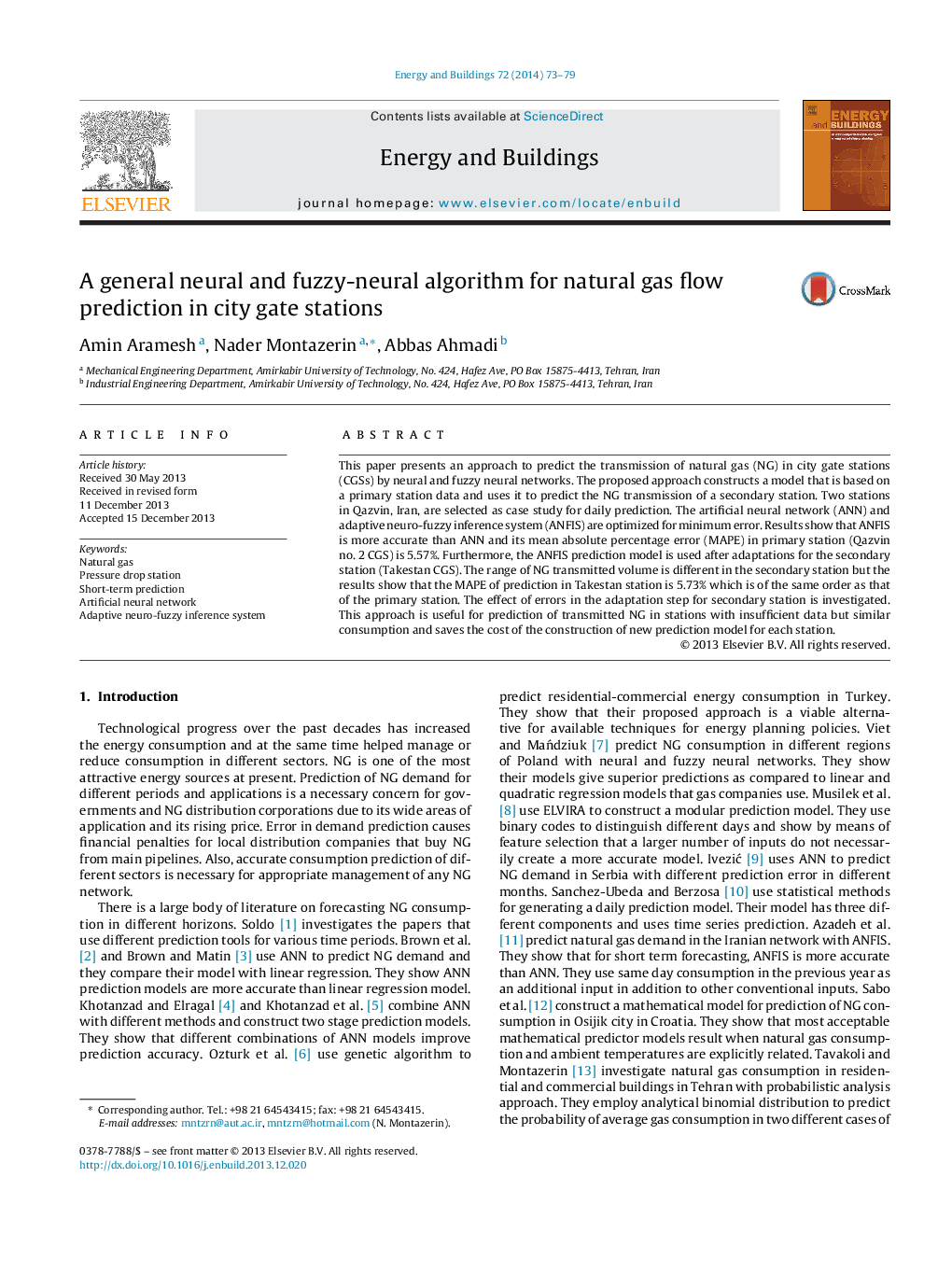| کد مقاله | کد نشریه | سال انتشار | مقاله انگلیسی | نسخه تمام متن |
|---|---|---|---|---|
| 263005 | 504062 | 2014 | 7 صفحه PDF | دانلود رایگان |
• An approach to predict natural gas transmission in city gate stations is presented.
• The constructed model is based on a primary station data and is extended to predict a secondary station.
• The error of prediction in the secondary station is of the same order as the primary station.
• This approach is useful for prediction of natural gas transmission in stations with similar consumption patterns but insufficient data.
• This approach saves the cost of the construction of new prediction model for each station.
This paper presents an approach to predict the transmission of natural gas (NG) in city gate stations (CGSs) by neural and fuzzy neural networks. The proposed approach constructs a model that is based on a primary station data and uses it to predict the NG transmission of a secondary station. Two stations in Qazvin, Iran, are selected as case study for daily prediction. The artificial neural network (ANN) and adaptive neuro-fuzzy inference system (ANFIS) are optimized for minimum error. Results show that ANFIS is more accurate than ANN and its mean absolute percentage error (MAPE) in primary station (Qazvin no. 2 CGS) is 5.57%. Furthermore, the ANFIS prediction model is used after adaptations for the secondary station (Takestan CGS). The range of NG transmitted volume is different in the secondary station but the results show that the MAPE of prediction in Takestan station is 5.73% which is of the same order as that of the primary station. The effect of errors in the adaptation step for secondary station is investigated. This approach is useful for prediction of transmitted NG in stations with insufficient data but similar consumption and saves the cost of the construction of new prediction model for each station.
Journal: Energy and Buildings - Volume 72, April 2014, Pages 73–79
